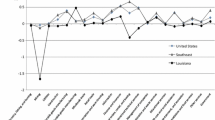Abstract
To sustain the essential civilian economy and provide for the national defense during a national emergency scenario, the United States Department of Defense (U.S. DoD) maintains a stockpile of strategic and critical materials that are key to the functionality of the national industrial base. The National Defense Stock Piling Act (50 U.S. Code 98) mandates the existence of the National Defense Stockpile, as well as a biennial requirements report provided to the U.S. Congress by the Office of the Secretary of Defense (OSD), which guides the selection of the types and quantities of materials in the National Defense Stockpile (NDS). Estimates of potential material shortfalls, or the differences between material demands and supplies, under the assumptions and prescriptions of a “Base Case” national emergency planning scenario are a primary component of the report. The National Defense Stock Piling Act also mandates that a variety of parametric sensitivity studies of the Base Case be included in the NDS report. In compliance with this aspect of the law, the baseline macroeconomic forecast that drives Base Case material demand estimates is systematically perturbed and then used to calculate adjusted material shortfalls, characterizing the sensitivity of material shortfall estimates to macroeconomic forecast uncertainty. Ultimately, this process leads to a better understanding of the impact of economic forecasting errors, which are a proxy for forecast uncertainty, on the material shortfall estimates contained in the NDS requirements report. The mathematical characterization of shortfall estimate uncertainties potentially motivates more conservative stockpiling policies, such as worst-case planning practices designed to hedge against maximum downside risks. While many approaches to the perturbation analysis are reasonable, a specific method for examining uncertainty was consistently implemented in past NDS reports and reused for the 2015 NDS Requirements Report. This paper quantifies the sensitivity of the NDS recommendations to macroeconomic forecasting errors and describes the methods used to conduct the sensitivity analysis. These methods are compared and contrasted to showcase the current techniques employed by the DoD to quantify its exposure to critical material risk.


Similar content being viewed by others
References
Mas-Colell A, Green J, Whinston MD (1995) Microeconomic theory. Oxford Printing Press, New York
Miller RE, Blair PD (2009) Input/output analysis: foundations and extensions. Cambridge University Press, New York
National Defense Stock Piling Act. 50 USC 98, “War and National Defense—Sec. 98b, ‘National Defense Stockpile.’ ” 2009 ed. https://www.gpo.gov/fdsys/pkg/USCODE-2011-title50/pdf/USCODE-2011-title50-chap5-subchapIII-sec98.pdf.
Obama BH II (2015) Economic report of the President. U.S. Government Printing Office, Washington
Office of the Management and Budget (OMB) (2015a) Mid-session review of the budget. U.S. Government Printing Office, Washington https://www.gpo.gov/fdsys/browse/collectionGPO.action?collectionCode=BUDGET.
Office of the Management and Budget (OMB) (2015b) Analytical perspectives, budget of the United States government, Washington, U.S. Government Printing Office https://www.gpo.gov/fdsys/browse/collection.action?collectionCode=BUDGET&browsePath=Fiscal+Year+2015&searchPath=Fiscal+Year+2015&leafLevelBrowse=false&isCollapsed=false&isOpen=true&packageid=BUDGET-2015-PER&ycord=0
Office of the Management and Budget (OMB) Budget of the United States government. U.S. Government Printing Office, 2015, Washington https://www.gpo.gov/fdsys/browse/collectionGPO.action?collectionCode=BUDGET
Thomason JS, project leader et al (2015) Analyses for the 2015 National Defense Stockpile Requirements Report to Congress on Strategic and Critical Materials. Volume 1: Material assessments and associated analyses. IDA Paper P-5190. Draft Final. Institute for Defense Analyses, Alexandria
U.S. Bureau of Economic Analysis (2014) Measuring the economy: a primer on GDP and the national income product accounts. U.S. Bureau of Economic Analysis, Washington
University of Maryland (2008) Interindustry Forecasting Project at the University of Maryland, University Park (INFORUM). ILIAD. University Park, MD: University of Maryland
University of Maryland (2011) Interindustry Forecasting Project at the University of Maryland, University Park (INFORUM). LIFT. University Park, MD: University of Maryland
Author information
Authors and Affiliations
Corresponding author
Rights and permissions
About this article
Cite this article
Lloyd, J.M., Ao, W.Y., Romana, A.K. et al. Methods in macroeconomic forecasting uncertainty analysis: an assessment of the 2015 National Defense Stockpile Requirements Report. Miner Econ 31, 269–281 (2018). https://doi.org/10.1007/s13563-017-0127-6
Received:
Accepted:
Published:
Issue Date:
DOI: https://doi.org/10.1007/s13563-017-0127-6




